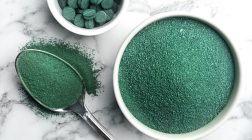How can biologics brands prepare for their own imminent patent cliff? Paul Gardiner and Dr Cliff Hall propose some late life cycle options
How can biologics brands prepare for their own imminent patent cliff? Paul Gardiner and Dr Cliff Hall propose some late life cycle options.
(1).jpg)
Since the arrival of the first biosimilar products in the market we have seen that the impact on the originator brand is not the same as with the introduction of a traditional generic. Whilst the generic patent cliffs are drying up, biological brands with a global market value of over 40 billion US dollars in annual sales are expected to lose patent protection by 2016. The list of brands facing this challenge includes several well-known blockbusters in oncology and autoimmune diseases including Rituxan and Remicade. However, the impact of this next wave of biosimilars will depend to a large extent on the readiness of big pharmaceutical firms to counter this threat. We propose an actionable framework to address this new challenge.
There are several factors influencing the likelihood of biosimilar market entry. These include development costs, complexity and risk, the overall size of the market, and whether there is a risk of new treatments making older treatments obsolete.

Paul Gardiner
By the time that a biosimilar reaches phase 2/3 development, it is time for originator brands to consider biosimilar market entry as a credible threat, to analyse the situation and implement late life cycle plans accordingly.
The peak penetration of biosimilars over four years has been between 10 and 35% (although in Europe somatotropin and filgrastim have provided contrasting examples). The price erosion of the originator brand following biosimilar introduction has been modest — in the range of 20 to 40% in Europe. There is a tendency to price close to the originator and then to compete for share using institutional rebates and contracting rather than competing directly on price.
The insights gained from an understanding of the likely price and volume impact on your brand from the above drivers and barriers are key to formulating and implementing a strategy to defend your brand.

Dr Cliff Hall
From Planning to Action
Our approach is to take the key lessons learnt from analogues, including past biosimilar launches, in terms of uptake and experiences across key stakeholder groups.
Some examples of programmes that have been successful in contributing to the achievement of overall brand objectives include:
Mapping the landscape both internally and externally, identifying the key people and functions, in order to ensure cross-functional internal coordination and a well considered approach to the external players.
Providing services beyond the product to add value, differentiate and build brand loyalty.
Entering into innovative contracts: This can provide a basis for improved outcomes, more real world data including recent cost-effectiveness information, in addition to managing the financial risk to the local payer.
Initiating medical programmes: Attention should be paid to continuing investment in answering relevant medical questions using disease or patient registries as well as health outcomes research approaches.
Engaging your industry association: While many of the activities are going to be specific to the brand team or to other functions in your organization, the analysis may reveal issues that are broader and not brand or company specific.
Develop a position paper that makes sure that positions are clear, structured and substantiated.
At a time when many pharmaceutical companies start to pull back on anything other than short-term investment in a brand, there is an interesting case here to maintain that investment support for longer and for a targeted investment in a defence strategy. The figure below showing sales erosion of between 10% and 40% over five years and illustrates the value of competing to retain share of market. For a 1 billion dollar product, every 10% share that is not lost to a competitor could be worth around 400 million dollars over 5 years.










